Best dehumidifiers 2024: Fight damp, mold and condensation
We have tried and tested some of the best dehumidifiers to help you get rid of bad odors, mold and condensation in your home ― these are our favorite appliances.
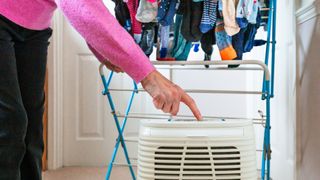
Dehumidifiers come in many shapes and sizes. Generally, bigger and more versatile dehumidifiers — like our favorite Honeywell TP50WK, for example — are more suitable for large rooms and bedrooms, while smaller and more portable appliances, such as the GE APER50LZ, are a batter fit for basements and tight spaces. Either way, investing in one of the best dehumidifiers can be an easy and effective way to improve the air quality in your home or workplace.
These smart appliances can rid your living spaces of damp, mold and dust mites, simply by sucking out excessive moisture from the air. As Wei-Ning Wang, an associate professor of indoor air quality and aerosol technology at Virginia Commonwealth University, told Live Science: “Dehumidifiers are essential tools to lower the relative humidity, which in turn could reduce mold growth and hence increase air quality." And stopping the spread of harmful microbes can help reduce the risk of asthma attacks and respiratory track infections, among other health issues. You can read more about their benefits in our Dehumidifiers FAQs section down below.
At Live Science, we know that dehumidifiers are not created equal, which is why we have tried and tested some of the best appliances on the market to help you pick the right model. During our dehumidifier testing process, we take into account price, size, design, effectiveness, usability, maintenance, energy use and availability of extra parts. We also look at online user reviews to see how people rate the devices we have tested.
But if you would rather do the opposite and increase the humidity levels, you might want to invest in one of the best humidifiers instead.
The quick list
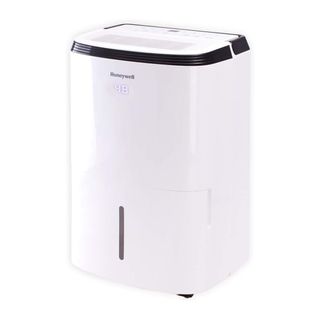
The best dehumidifier overall
With its sleek design, superb performance, ease of use, and a generous 5-year warranty, the Honeywell TP50WK takes the well-deserved top spot.
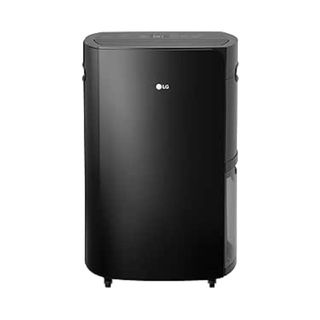
Best for large rooms
This stylish 50l dehumidifier boasts powerful performance and intuitive controls, making it a great option for large rooms and offices. It is, however, on the expensive side.
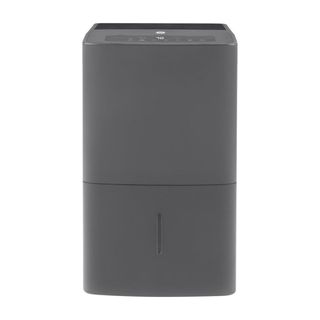
Best for basements
This well-built dehumidifier is a great option for damp basements due to its large 50-pint capacity, long draining hose and wealth of handy smart features.
The best dehumidifiers we recommend in 2024: Thoroughly tested by our experts with hands-on experience
Why you can trust Live Science
The best dehumidifier overall




Specifications
Reasons to buy
Reasons to avoid
✅ You want a powerful yet compact dehumidifier: This Honeywell model is surprisingly light and portable.
✅ You are looking for a low-maintenance appliance: It is easy to clean, and comes with plenty of smart features.
✅ You are on a budget: It may not be the cheapest model, but it is still affordable.
❌ You want a built-in pump: You can't direct the hose upwards into a sink if you need to.
❌ You need a long drainage hose: This dehumidifier needs to be placed close to a water reservoir.
🔎 Honeywell TP50WK: This 50-pint dehumidifier combines exceptional performance with great looks and compact build, and it is easy to use, too. ★★★★
The Honeywell TP50WK takes the crown of the best dehumidifier overall. This appliance won our seal of approval with sleek design, high performance, ease of use, and a very generous 5-year warranty ― which is why we gave it a strong 4-star rating in our Honeywell TP50WKN dehumidifier review.
This Energy Star-rated dehumidifier is suitable for spaces of up to 3,000 feet, making it an ideal choice for homes with medium to large rooms. It's a lot smaller and lighter than the LG Puricare 50-pint dehumidifier, despite having the same tank size.
With a smart digital control system that actively monitors your space for moisture levels and changes modes accordingly, you can leave the Honeywell TP50WK running, as it features continuous drainage as well as a water tank. An auto-shutdown feature allows you to use the water tank alone, without worrying that your dehumidifier will overflow.
One thing to be aware of, however, is that the continuous drain relies on gravity, rather than an in-built pump. So you’ll have to ensure your hose isn’t too straight or long, otherwise water may collect in the hose and even return to the unit.
The tank itself also comes with splash guards to avoid leaks and spills, while a washable dust filter helps to reduce dust and impurities in the air. The Honeywell TP50WKA also features an auto-restart mode, so if your home experiences a power outage, it simply starts up again all by itself.
We set the device up in a medium-sized living room in the middle of a very hot day. Upon turning it on, the LED display read that the room was at 89% humidity – and it felt like it. After an hour of running it consistently, it had dropped to 42% humidity, and there was a notable difference in the room.
Emptying the bucket was easier, and moving the dehumidifier around was a breeze thanks to the built-in wheels and robust handle.
With a clean white finish, easy-to-operate controls, and a digital display that makes it easy to check your humidity levels, the Honeywell TP50WK is an attractive piece of kit that fits discreetly into any space.
Cherry on top? The Honeywell TP50WK's retail price is just under $300, and it often gets discounted at Amazon and Walmart.
- Read our full Honeywell TP50WK dehumidifier review
| Attributes | Notes |
|---|---|
| Portability | Handle and wheels. |
| Functionality | Easy to set up and use. |
| Performance | Relatively quiet (55 dB). |
Best dehumidifier for large rooms




Specifications
Reasons to buy
Reasons to avoid
✅ You want a stylish appliance: This LG dehumidifier is a real looker.
✅ You are looking for a low-maintenance dehumidifier: It comes with an auto shut-off, humidity controls, and other useful features.
✅ You want something portable: This appliance features side pocket handles and castor wheels.
❌ You are on a budget: It is a pricey piece of kit.
❌ You need high customizability: This LG dehumidifier features just two fan speeds.
🔎 LG UD501KOG5: This exceptionally stylish, quiet and portable 50-pint dehumidifier is a great option for large rooms ― as long as you do not mind its limited features and a relatively high price tag. ★★★
This sleek dehumidifier is a talking point for any room. Encased in a black shell and featuring a clear plastic side-loading water tank, it’s one of the most stylish dehumidifiers on the market. We also liked its automatic features, thermal resistant parts and intuitive controls. And thanks to its 50-pint capacity, this dehumidifier is a great option for large rooms and offices.
The LG UD501KOG5 also comes with a host of features, from humidity auto controls to maintain your preferred levels, to a continuous drain feature, meaning you don’t have to keep emptying the water tank.
Automatic shut-off means the device sounds an alarm and powers off as soon as the water tank is nearly full, while a safety standby kicks into operation every 23 hours, to prevent overheating.
During our LG Puricare 50-pint dehumidifier review, our tester found the appliance a cinch to set up and turn on, with virtually no real assembly required. Unfortunately, there are only two fan speeds, and there's no continuous mode. You also can't set the LG Puricare for a 24 hour cycle – the maximum is 12, which is unusual for a 50 pint unit.
We set the device up in a bedroom measuring 45% humidity, and set it to the highest setting to drop it to 30%. After an hour, it had dropped to 35%, and half way during the second hour had hit 30%. After two hours the bucket contained nearly three full cups of water, which was easy to dump out thanks to the removable lid. In fact, the bucket on the LG Puricare is one of the best we've seen. Removing and dumping out the bucket is incredibly easy thanks to a removable splash guard/lid which gives you optimal surface area for emptying out the tank.
Side pocket handles and castor wheels make it easy to move from room to room, wherever you need it most.
At 26.2 inches high, it’s the tallest dehumidifier in our buying guide, so you may need to take this into account when comparing models for your specific space.
- Read our full LG Puricare 50-pint dehumidifer review
| Attributes | Notes |
|---|---|
| Portability | Handles and wheels. |
| Functionality | Easy to set up and use. |
| Performance | Relatively quiet (58 dB). |
Best dehumidifier for basements




Specifications
Reasons to buy
Reasons to avoid
✅ You need to move it around a lot: This GE dehumidifier features a long draining hose.
✅ You are looking for smart features: It comes with an auto shut-off, humidity controls, and more.
✅ You want something portable: This dehumidifier features built-in pocket handles and castor wheels.
❌ You want a dehumidifier that drains on its own: It shuts off when its tank is full.
❌ You need a comprehensive warranty: This GE dehumidifier offers a 1-year limited warranty.
🔎 GE Dehumidifier APER50LZ: Best suited for small spaces and basements, this portable dehumidifier is sleek, quiet and reliable. It does not, however, drain on its own. ★★★ ½
The GE Dehumidifier APER50LZ is portable, easy to use, and comes with a built-in active water pump and 50-pint pump capacity, making it a great option for small to medium-sized basements. The pump helps to continuously drain water away from the unit, using the 16 ft-long hose that comes with the appliance. As such, you can leave the dehumidifier on without worrying about the unit overflowing. And as opposed to many bulky and unappealing for-basement models available on the market, the APER50LZ ― which comes in a sleek ‘stratus gray’ ― looks more like a piece of tech than a household appliance.
The GE Dehumidifier APER50LZ monitors the humidity levels in your space and adjusts its settings accordingly between three fan speeds. It also features a ‘clean filter’ alert, so there’s no need to worry about forgetting when it’s time to clean away any dust and residue build-up.
During our GE APER50LZ dehumidifier review, we were also impressed by its good performance. When we first started up the GE dehumidifier on its highest setting, the humidity in the room was 55%, and it decreased to 40% after just an hour of running.
Like many of the dehumidifiers in our guide, the GE Dehumidifier APER50LZ features an auto-shutoff and auto-restart. That means it shuts down if the water tank is full, and powers up again automatically if you have a power outage.
When running the dehumidifier consistently, we needed to empty it of water approximately once a day, although this will definitely depend on the environment you’re using it in (more humidity equals more water). The water tank is easy to slide out and empty, if you prefer to use that instead of the continuous drainage. Personally, we found it much easier to pour the water out, though the pump feature tends to be a fan favorite with other users. It also features an empty bucket alarm, which sounds for 10 seconds if the bucket is full or missing.
Castor wheels and in-built pocket handles make the GE Dehumidifier APER50LZ easy to move around the home. An automatic defrost feature also ensures your machine keeps running, even when frost builds up on the coils inside.
- Read our full GE APER50LZ dehumidifier review
| Attributes | Notes |
|---|---|
| Portability | Wheels, no handles. |
| Functionality | Easy to use and set up. |
| Performance | Relatively loud (65 dB). |
Best dehumidifiers: Comparison
| Product | Rating | ✅ Pros | ❌Cons |
|---|---|---|---|
| Honeywell TP50WK | ★★★★ | Excellent performance, plenty of features, compact, easy to use. | No integrated pump, short drainage hose. |
| LG UD501KOG5 | ★★★ | Great performance, stylish, portable, easy to use. | Limited features, relatively expensive. |
| GE Dehumidifier APER50LZ | ★★★ ½ | Great performance, plenty of features, portable. | Limited features. |
Our expert consultants

Kyle Knappenberger is the director of applications at Timilon Technology Acquisitions. He holds a degree in microbiology from Kansas State University, which he earned while researching and testing water purification techniques. For over a decade, Knappenberger has been working on using safe metal oxide technology for odor control and toxic chemical neutralization applications. For this piece, he talked about the benefits of using a dehumidifier.

Wei-Ning Wang is an aerosols expert and associate professor at Virginia Commonwealth University. He is an editorial board member for several scientific journals, including Nanotechnology, KONA Powder and Particle Journal, Applied Sciences, Nanomaterials & Nanotechnology and is an advisory panel member for the Journal of Physics D. He told Live Science about the health risks posed by high humidity.
Best dehumidifiers: Frequently Asked Questions
Do you need a dehumidifer?
Here are some of the signs that your home may benefit from a dehumidifier:
- Your windows often have condensation.
- There are signs of mold on your ceilings and walls.
- There is a musty odor in your home.
- You have wooden window sills that are soft and/or rotting.
- There are water stains on the walls.
- Clothes smell damp even if they’re freshly washed.
- You, or members of your family, have persistent respiratory illnesses.
- Someone in your home has a dust mite allergy.
- There are unwanted pests in your home, such as cockroaches, moths, or silverfish.
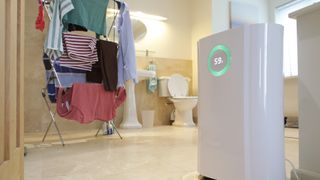
Are dehumidifiers worth it?
Dehumidifiers can improve the quality of indoor air by keeping humidity levels in check. According to the Mayo Clinic, high humidity levels can increase condensation, triggering the growth of mold, harmful bacteria, and dust mites. These can, in turn, cause respiratory problems, and even trigger allergy or asthma attacks.
Knappenberger also tells Live Science: “The benefits are mainly observed in warmer and moister climates by removing or reducing the amount of water in the air. Higher humidity in warm air makes it much more uncomfortable. In a home, this can also potentially lead to other issues with indoor air quality and mold issues. So reducing humidity can impact comfort and safety.”
What humidity is comfortable?
What humidity is comfortable? According to the Environmental Protection Agency, indoor humidity levels should be kept below 60%, but ideally rest somewhere between 30% and 50%.
A good dehumidifier will give you an idea of humidity levels in your home, and allow you to set your preferred humidity levels. It will then adjust its settings continuously to ensure your indoor space meets those preferred levels. Look for the term ‘humidistat’ in the appliance specifications, but if your dehumidifier does not have it, Energy Star suggests buying a hygrometer ― a gauge that measures humidity levels. Hang it somewhere near your dehumidifier, so you can check humidity levels and adjust your dehumidifier’s settings when you need to.
Are dehumidifiers expensive to run?
Dehumidifiers do tend to use a lot of electricity, but it does depend on the model. All the appliances in our buying guide are Energy Star certified. This means that they can help you save on your energy bills without sacrificing performance, features, or comfort. They also reduce greenhouse gas emissions. Choosing a dehumidifier that has the Energy Star label means that you’re saving almost 15% in running costs. So look for a dehumidifier with the Energy Star label, to do your bit for the environment and save yourself some cash in the process.
How to choose the best dehumidifier for you
What dehumidifier is best?
There are generally two types of dehumidifier. A refrigerator dehumidifier works by using a fan to draw in moist air which then passes over coolant-cooled coils. The air is warmed and dried and allowed to re-enter your home. A desiccant dehumidifier, on the other hand, uses a heated, absorbent material to draw moisture out of the air and this is collected in a water tank that needs emptying periodically. Both dehumidifiers can cool the room by reducing humidity, but they are not designed to lower the overall air temperature.
If your home is regularly heated, you may prefer to opt for a refrigerator dehumidifier, as these need the air in the room to be warmer than inside the dehumidifier. Desiccant dehumidifiers are more efficient in cooler temperatures, so if you want to tackle mold or mustiness in a cold basement, garage, or conservatory, one of these may be a better choice.
What size dehumidifier do I need?
Many models have a lower capacity these days ― be aware that in 2019, the U.S. Department of Energy finalized new standards for dehumidifiers to better reflect the average temperature of a basement. However, rest assured that dehumidifiers with a lower capacity aren’t any worse than older models. Rather, the old 70-pint capacity is the same as a 50-pint capacity because of these new testing regulations.
So how big of a dehumidifier do you need? According to Kyle Knappenburger, director of Technology for air filtration company Timilon Corporation, the size of the room is the most important factor to consider above all else, so choose an appliance that has sufficient capacity for the space it’s in, especially if you don’t want a continuously draining dehumidifier.
How we tested these dehumidifers
How we test the best dehumidifiers



Each dehumidifier in this guide has been tested to the exact same standards, using the same processes.
We start by noting the humidity level of a closed room. We then let the dehumidifier run on the highest setting. While the machine is running, we measure the noise level of the machine in decibels. After an hour, we measure and take note of the humidity level in the room. This process is repeated for each mode the unit has, such as lower mode and night mode. We take note of how quickly the water tank fills up, how often we need to empty it, and how easy this is to do.
Our testing also takes into account the size of the unit, the cost, ease of use, availability of additional parts, ease of cleaning and the energy use on the lowest and highest settings. Finally, we check online user reviews to see what people think, and we test for any persistent problems or defects that we read about.
As per our testing policy, we fully disclose all of our findings in our reviews.
Sign up for the Live Science daily newsletter now
Get the world’s most fascinating discoveries delivered straight to your inbox.
Joanne Lewsley is a UK-based freelance writer and editor, covering health and lifestyle news and features. She mainly creates evidence-based health and parenting content and has worked with a number of global sites, including BabyCentre UK, Medical News Today, Fit & Well, Top Ten Reviews, and Yahoo!
- Anna GoraHealth Writer